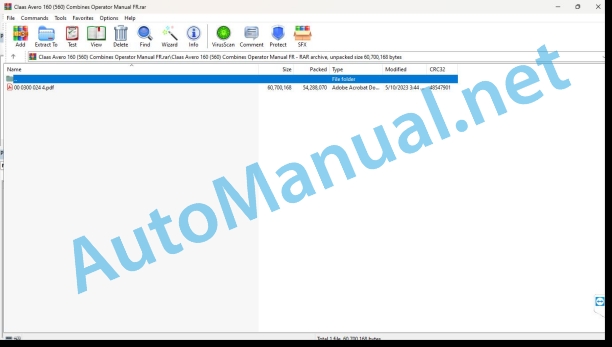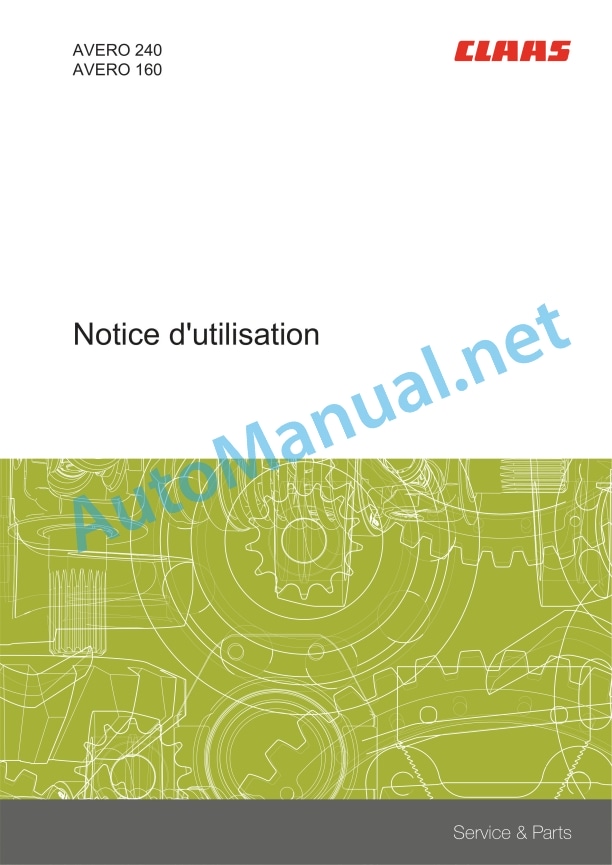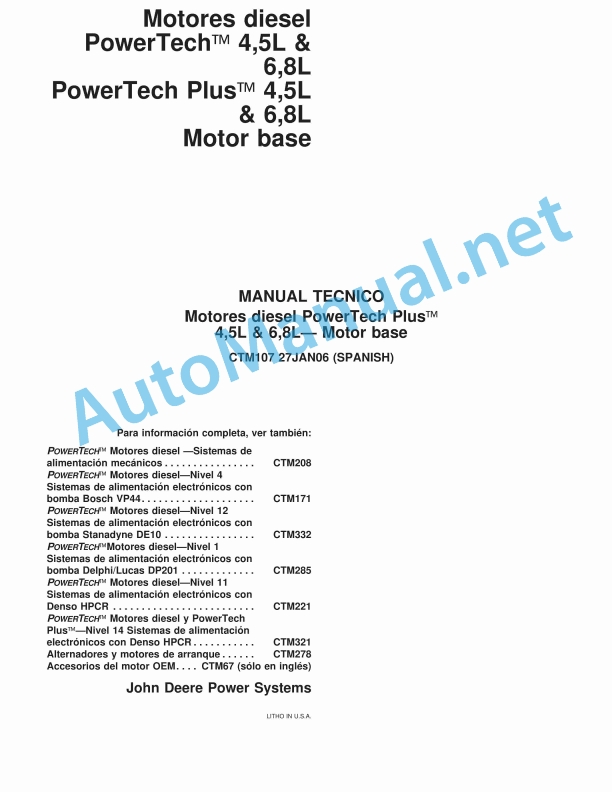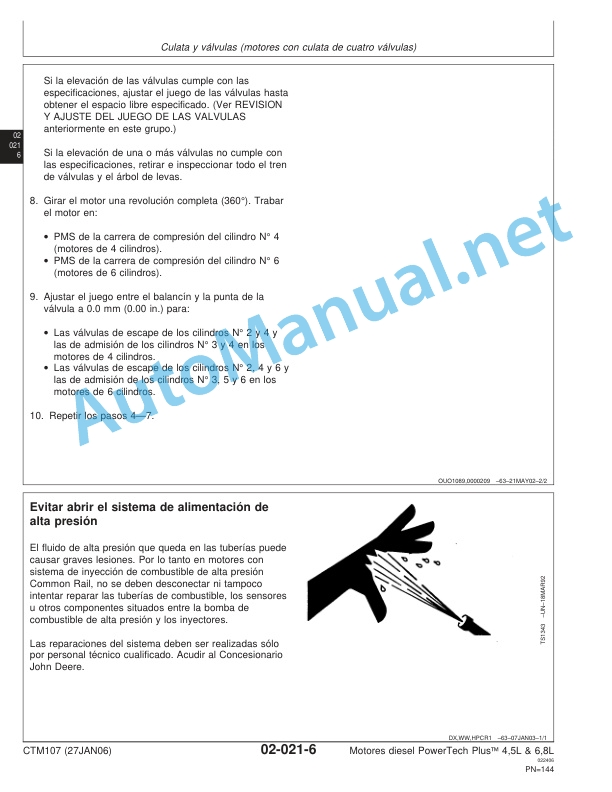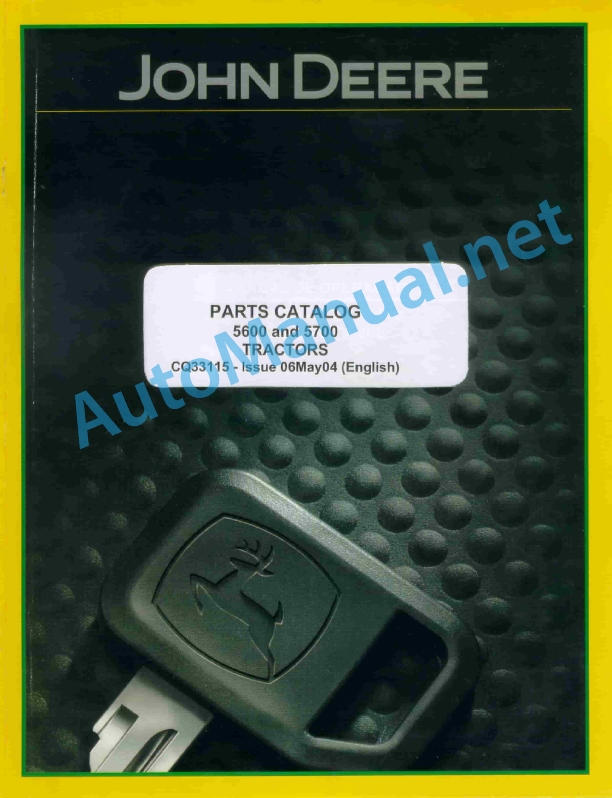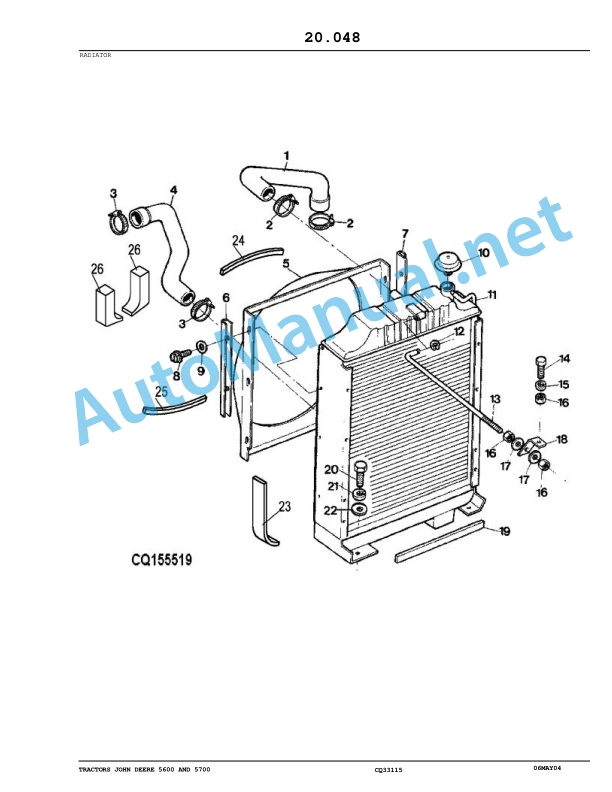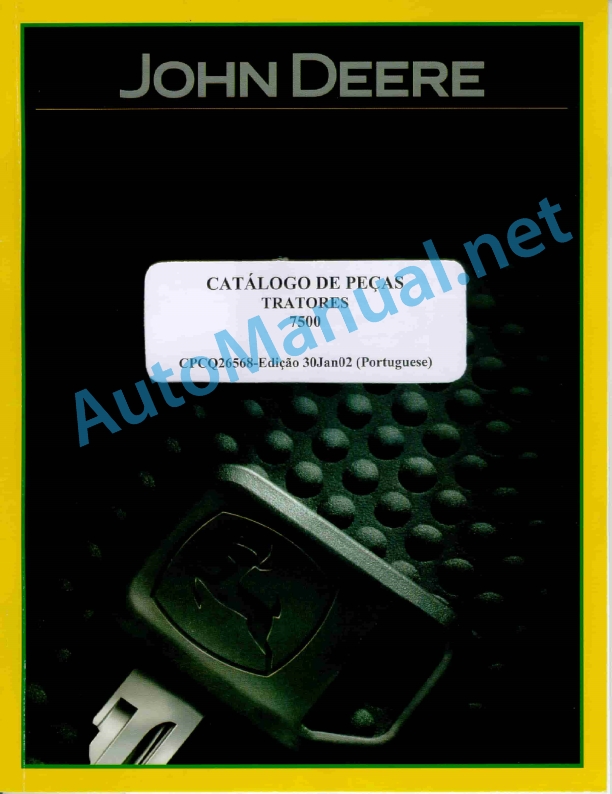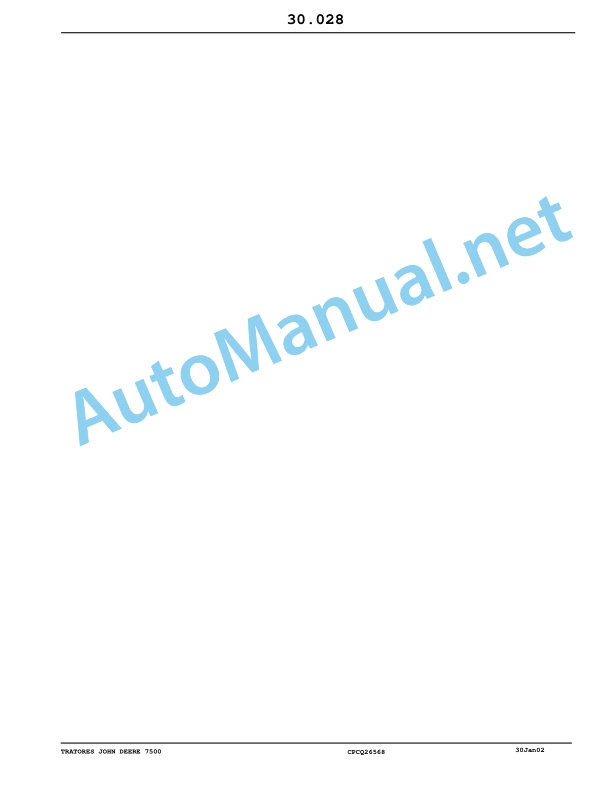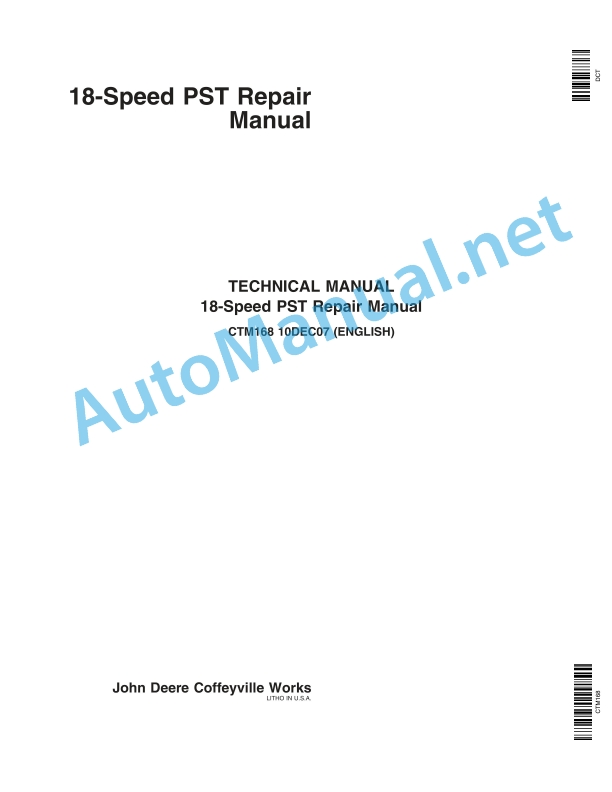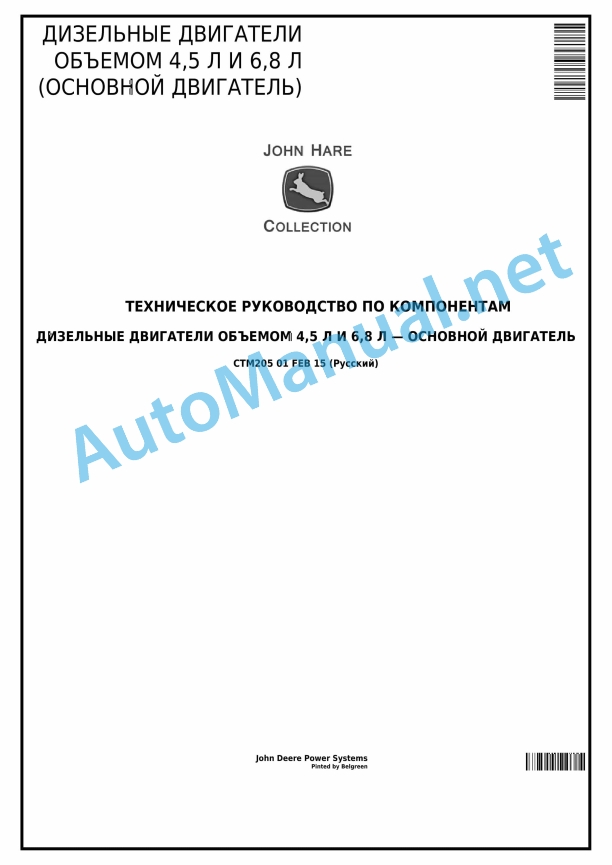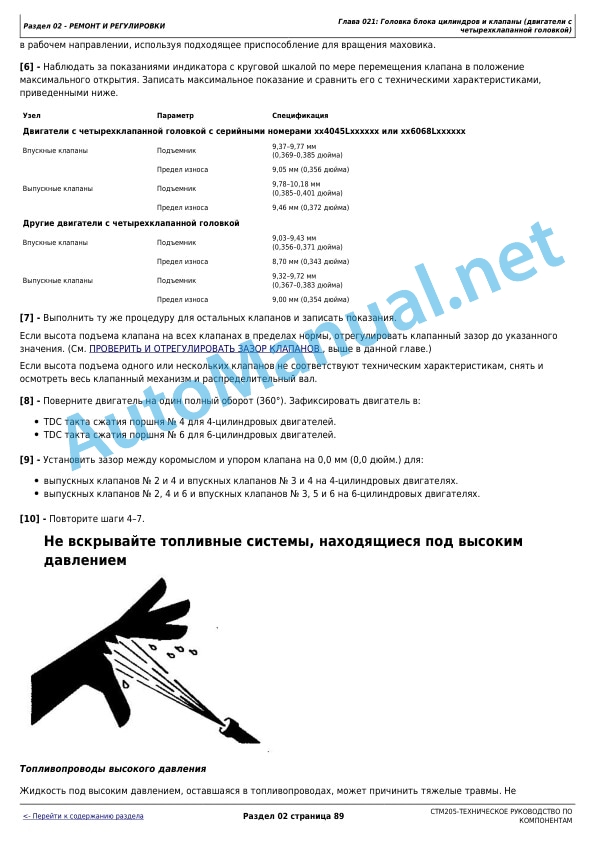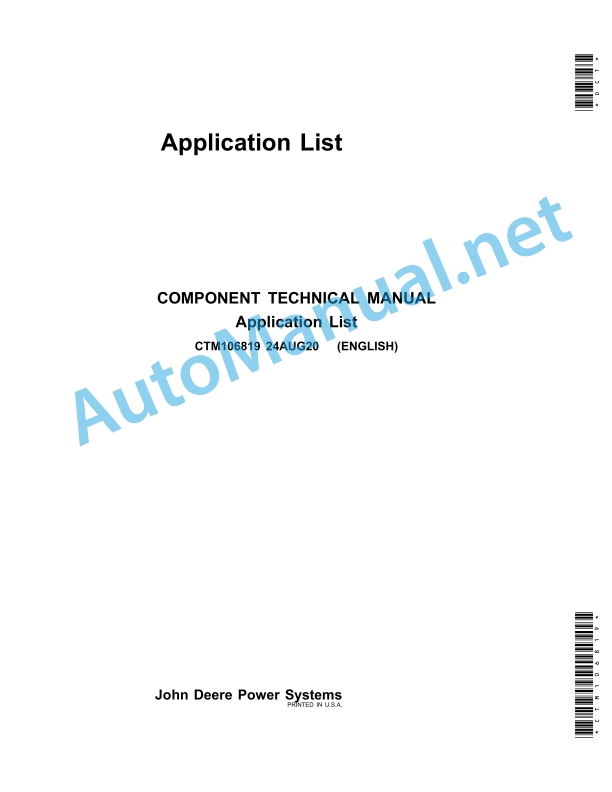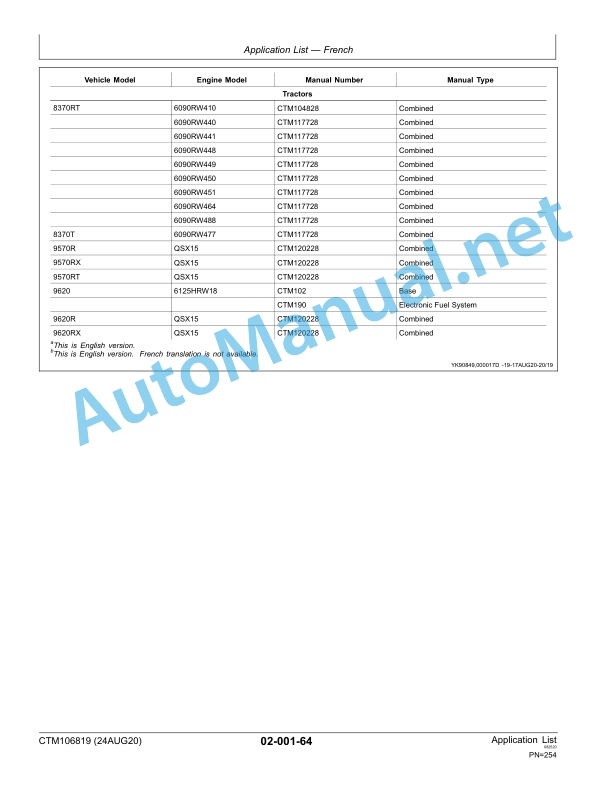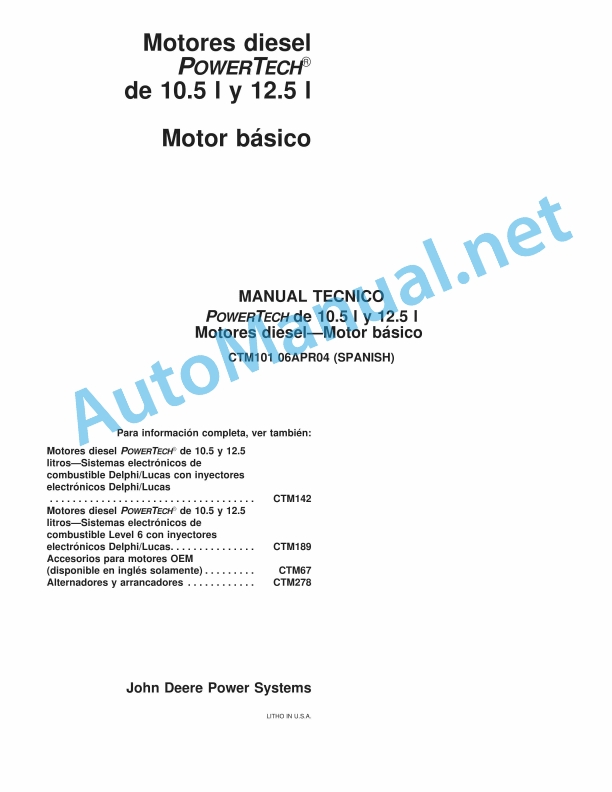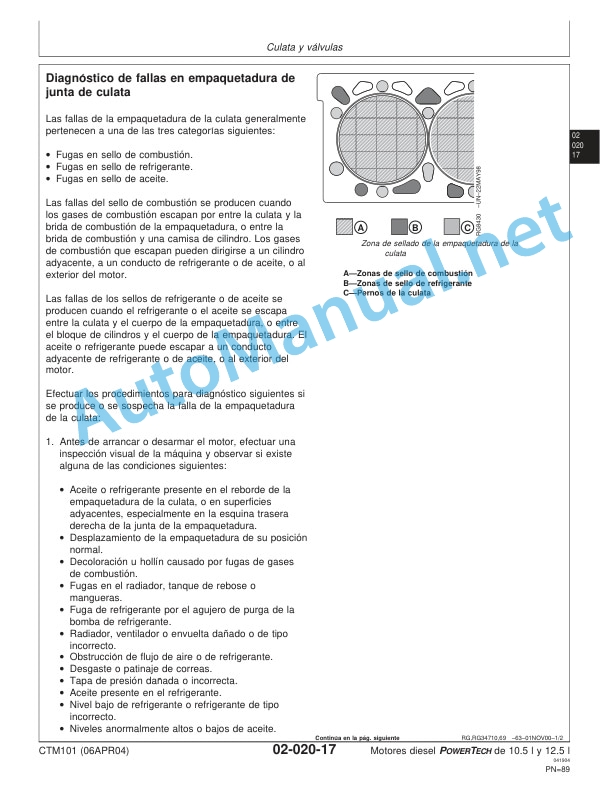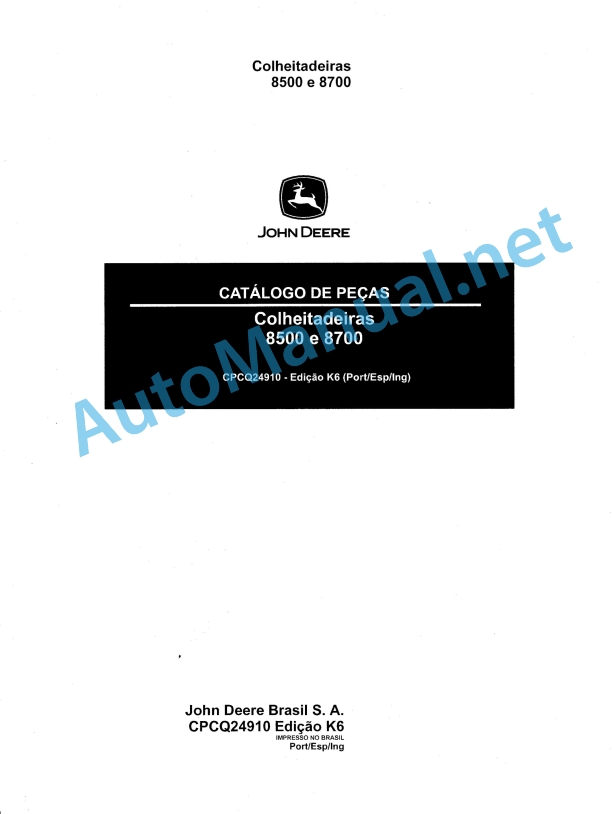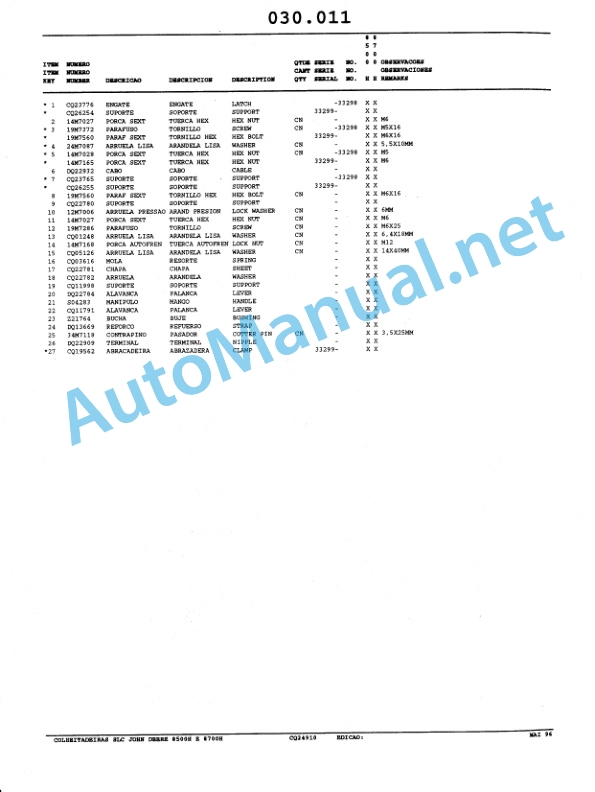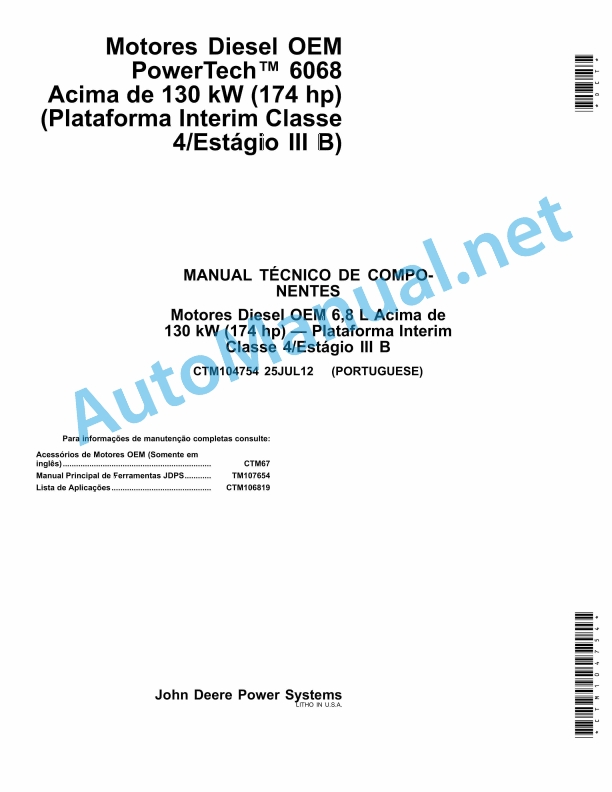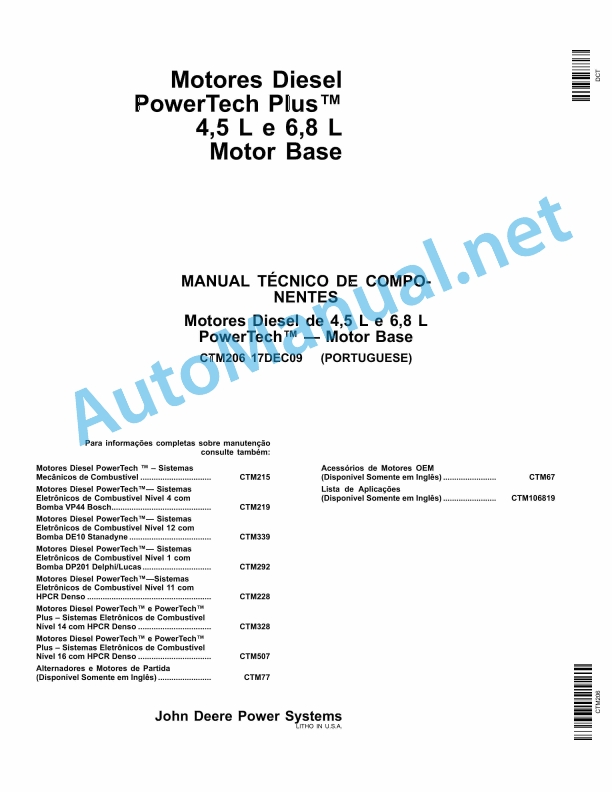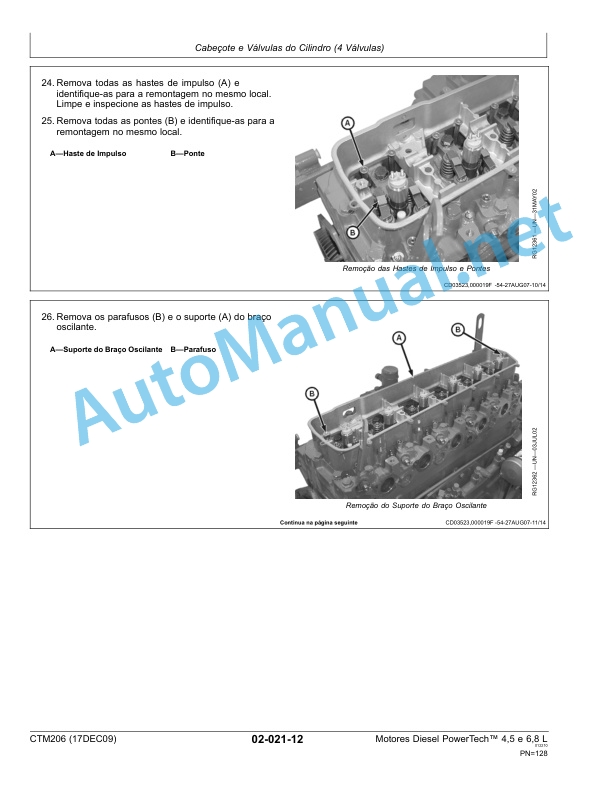Claas Avero 160 (560) Combines Operator Manual FR
$50.00
- Model: Avero 160 (560) Combines
- Type Of Manual: Operator Manual
- Language: FR
- Format: PDF(s)
- Size: 51.8 MB
File List:
00 0300 024 4.pdf
00 0300 024 4.pdf:
AVERO 240AVERO 160
Contents
1 Introduction
1.1 General information
1.1.1 Validity of the notice
1.1.2 Information regarding this user manual
1.1.3 Icons and notes
1.1.4 Optional equipment
1.1.5 Qualified specialist workshop
1.1.6 Notes on maintenance
1.1.7 Notes regarding warranty
1.1.8 Spare parts and technical questions
1.2 Use in accordance with instructions
1.2.1 Use in accordance with the provisions
1.2.2 Reasonably foreseeable misuse
2 Security
2.1 Recognize the warnings
2.1.1 Warning pictogram
2.1.2 Signal word
2.2 Safety tips
2.2.1 Meaning of the instructions for use
2.2.2 Observe warning pictograms and warnings
2.2.3 Observe warning pictograms and warnings
2.2.4 Requirements for all people who work with the machine
2.2.5 Children at risk
2.2.6 Risk areas
2.2.7 Do not stand between the machine and the front tool
2.2.8 Guide passenger during work
2.2.9 Couple the machine with a front implement or trailer
2.2.10 Risk of injury due to rotating shafts
2.2.11 Constructive modifications
2.2.12 Optional equipment and spare parts
2.2.13 Checking the running machine
2.2.14 Operation only after proper commissioning
2.2.15 Technical condition
2.2.16 Risks in the event of damage to the machine
2.2.17 Respect technical threshold values
2.2.18 Danger due to inertia of machine elements
2.2.19 Maintain safety devices in operational capacity
2.2.20 Wear suitable clothing
2.2.21 Remove dirt and loose objects
2.2.22 Prepare the machine for road travel
2.2.23 Risks when traveling on the road and in the fields
2.2.24 Park the machine correctly
2.2.25 Inappropriate operating consumables
2.2.26 Safety in handling operating consumables and secondary consumable materials
2.2.27 Fuel is harmful to health
2.2.28 Refrigerants are harmful to health
2.2.29 Environmental protection and disposal
2.2.30 There must be no chemicals in the cabin
2.2.31 Fire risks
2.2.32 Fatal electric shock from overhead power lines
2.2.33 Behavior in the event of voltage discharge from overhead power lines and lightning strikes
2.2.34 Electric shock from the electrical system
2.2.35 Noise can cause health problems
2.2.36 Vibrations can be harmful to health
2.2.37 Compressed air
2.2.38 Toxic exhaust gases
2.2.39 Hot surfaces
2.2.40 Safety when getting on and off
2.2.41 Work only on the stopped machine
2.2.42 Maintenance and repair work
2.2.43 Machine elements recorded and loads
2.2.44 Welding work is prohibited
2.2.45 Risks due to welding work
2.2.46 Checking and charging the battery
2.3 Safety label
2.3.1 Structure of warning pictograms
2.3.2 Diesel engine warning pictogram
2.3.3 Undercarriage warning pictograms
2.3.4 Hydraulic system warning pictograms
2.3.5 Cabin/driving station warning pictogram
2.3.6 Power group warning pictograms
2.3.7 Threshing gear warning pictogram
2.3.8 Separation warning pictograms
2.3.9 Cleaning warning pictogram
2.3.10 Warning pictograms for harvest/straw storage
2.3.11 Grain recovery warning pictogram
2.3.12 Warning pictograms of assembly parts / machine housing
3 Description of the machine
3.1 Overview and mode of operation
3.1.1 Overview of AVERO front and left side
3.1.2 Overview of the machine at the rear right side
3.1.3 Operating mode of the machine
3.1.4 Cummins B6.7 Diesel Engine Overview
3.1.5 Overview of Perkins 1206F-E70TA diesel engine
3.1.6 Overview of Perkins 1106D-E70TA diesel engine
3.1.7 Overview of cooling units
3.2 Nameplates and vehicle identification number
3.2.1 Nameplate on Cummins B6.7 diesel engine
Example of Cummins model designation
3.2.2 Nameplate on the Perkins 1106D-E70TA diesel engine
3.2.3 Perkins 1206F-E70TA Diesel Engine Nameplate
3.2.4 Machine nameplate
3.2.5 Rating plate, drive axle
3.2.6 Nameplate, steering axle
3.2.7 Rating plate, straw chopper
4 Control and display elements
4.1 Cabin and driving position
4.1.1 Driving position
4.1.2 Control console
4.1.3 Column B control console
4.1.4 Column B control console
4.1.5 Column B control console
4.1.6 Adjusting elements, cabin roof
4.1.7 Multifunction handle
4.1.8 Overview of the driving informant
4.1.9 Overview of the driving informant
4.1.10 Overview of the driving informant
4.1.11 Multifunction switch
4.1.12 Driver’s seat
4.1.13 Driver’s seat
4.1.14 A/C MATIC air conditioning control element
4.1.15 Air conditioning
4.2 On-board computer and display screen/indicators
4.2.1 Validity of the CIS software
4.2.2 CIS general instructions
4.2.3 CIS screen
4.2.4 CIS main menu
Using the main menu
Main menu overview
4.2.5 Types of CIS errors and driving informant
4.2.6 CIS error messages
5 Technical characteristics
5.1 AVERO 240 / 160 – Types 561 / 560
5.1.1 Diesel engines
5.1.2 Cummins B6.7 diesel engine
5.1.3 Perkins 1206F-E70TA diesel engine
5.1.4 Perkins 1106D-E70TA diesel engine
5.1.5 Undercarriage
Forward speed
Measurement conditions
Properties
5.1.6 Tire pressure
5.1.7 Overview of drive axle tracks
5.1.8 Overview of the steering axle tracks
5.1.9 Channel table 1
5.1.10 Channel table 3
5.1.11 Channel table 4
5.1.12 Channel table 5
5.1.13 Channel table 6
5.1.14 Turning radius diameter
5.1.15 Brakes
5.1.16 Management
5.1.17 Electrical system and electronic system
5.1.18 Noise level and vibrations
5.1.19 Power group
5.1.20 Threshing bodies
5.1.21 Separation
5.1.22 Cleaning
5.1.23 Hopper volume
5.1.24 Dimensions of the hopper drain tube in working position
5.1.25 Machine dimensions
5.1.26 Weight
5.2 Operating consumables
5.2.1 Lubricants
5.2.2 Coolant
5.2.3 Hydraulic oils
5.2.4 Brake fluid
5.2.5 Select an approved fuel and urea solution
6 Preparing the machine
6.1 Stop and immobilize the machine
6.1.1 Stop and immobilize the machine.
6.1.2 Block the machine to avoid any risk of movement
6.2 Access workstations and maintenance stations
6.2.1 Pivot the front ladder
6.2.2 Adjust the rear scale
6.2.3 Access to the workstation and maintenance locations
6.3 Prepare the machine for moving
6.3.1 Prepare for road travel
6.3.2 Prepare for movement in the field
6.4 Adjusting the machine for work
6.4.1 Set the machine to harvest grain
6.4.2 Set the machine to harvest corn
6.4.3 Set the machine to harvest rice
6.4.4 Set the machine from rice harvest to grain harvest
6.4.5 AVERO 240 threshing table
6.4.6 AVERO 160 piling table
6.4.7 Grid table
6.4.8 Threshing segment
6.4.9 Pre-concave flaps
6.4.10 Clean the machine for harvesting the seed
6.5 Load the machine
6.5.1 Loading and securing the machine
6.5.2 Remove the crane eyes
6.6 Front tool
6.6.1 Install the front tool
6.6.2 Prepare for locking
6.6.3 Install the locking pawl
6.6.4 Hanging the front tool
6.6.5 Lock the front tool
6.6.6 Install the cardan shaft
6.6.7 Install the multicoupler
6.6.8 Fold the cutting deck into working position and driving position
6.6.9 Remove the stands
6.6.10 Remove the front tool
6.6.11 Install the crutches
6.6.12 Remove the multicoupler
6.6.13 Remove the cardan shaft
6.6.14 Unlock the front tool
6.6.15 Unhook the front tool
6.7 Diesel engine
6.7.1 Comply with fuel specification
6.7.2 Comply with the fuel specification
6.7.3 Select permitted fuels and urea solution
6.7.4 Comply with urea specifications
Use of urea solution
Purity and standard of urea solution
Storage of urea solution in tanks and containers
Properties of urea solution at high and low external temperatures
6.7.5 At low temperatures use winter fuel
6.7.6 Heating the urea solution when temperatures are low
6.7.7 Refueling the machine
Refill with urea solution
6.8 Chassis
6.8.1 Overview of the steering axle
6.8.2 Adapting the steering axle from transport position to working position
6.8.3 Steering axle 00 0694 220 X – adjust track
Check the mobility of the steering axle
6.8.4 Steering axle 00 0694 220
6.9 Brake
6.9.1 Check the parking brake
6.9.2 Checking the service brake
6.10 Coupling device
6.10.1 Install the hitch clevis*
6.10.2 Hitching the trailer
6.10.3 Unhitching the trailer
6.11 Hydraulics
6.11.1 Identify hydraulic oil
6.12 Electrical and electronic system
6.12.1 Install the air conditioning compressor fuse
6.12.2 Adjusting the dipped headlights
6.12.3 Switching road lighting depending on the front implement
6.13 Cabin and driving position
6.13.1 Install the proximity mirror*
6.13.2 Adjust the proximity mirror*
6.13.3 Remove the transport safety deverom the cabin
6.13.4 Adjust the control resistance of the forward lever
6.14 Power group
6.14.1 Check the anti-slip strips of the feed channel
6.14.2 Adjust the height of the feed chain
6.14.3 Adjust the lowering speed of the front tool
6.15 Ground guidance
6.15.1 Check the front tool discharge pressure accumulator
6.16 Threshing bodies
6.16.1 Opening and closing the destoner container
6.16.2 Remove and install the destoner tray cover*
6.16.3 Remove and install the destoner tank cover*
6.16.4 Opening and closing the mixer hatch
6.16.5 Remove and install the pre-concave segments
Remove the perforated concave segments
Remove the stamped segments from the pre-concave
Install the pre-concave segments
6.16.6 Install and remove the piling segment (AVERO 240)
6.16.7 Remove and install the concave segments (MULTICROP concave)
6.16.8 Adjusting the concave basic setting
6.16.9 Check basic concave setting
6.16.10 Install and remove the beater cover plates*
6.16.11 Install and remove the grid* or sheet metal* of the concave
6.16.12 Install the final counter-batten*
6.17 Separation
6.17.1 Remove and install the anti-splash fabric
6.17.2 Remove and install the side separators
6.17.3 Install and remove the CCM separators
6.17.4 Remove and install the central separators
6.17.5 Remove and install the rice separators
6.17.6 Install and remove the shaker cover plate*
6.18 Cleaning
6.18.1 Remove the grids
6.18.2 Install the grids
6.18.3 Place the spacers on the grids
6.18.4 Cover and open the return of potatoes
6.19 Deposit of harvested product and deposit of straw
6.19.1 Adjust the speed of the straw chopper
6.19.2 Pivot the straw guide plate downwards and remove it
6.19.3 Place the straw guide plate and pivot it downwards
6.19.4 Install the rubber canvas* of the straw chopper
Install the rubber canvas
6.19.5 Remove the rubber cloth* from the straw chopper
Remove the rubber canvas
6.19.6 Place and place the cover plate* on the counter-knives of the straw chopper
Install the cover plate
Remove the cover plate
6.19.7 Bring the straw chopper to the grid mounting position
6.19.8 Hang the straw guide apron at a height
6.20 Grain recovery
6.20.1 Getting into the hopper and leaving the hopper
Entering and leaving the shaker area
6.20.2 Opening and closing the hopper cover
6.20.3 Set the hopper full indicator
6.20.4 Tighten the drain plug on the hopper drain tube
6.21 Assembly parts and bodywork
6.21.1 Ballast the machine
Fill the tires
Install the steering axle weight
6.21.2 Determine the weight of the steering axle
Steering axle type assignment
Machine and front tool assignment
6.21.3 Determining tire filling
6.21.4 Adapt the weighting mass for the steering axle
6.21.5 Opening and closing the side hatches
6.21.6 Opening and closing the engine compartment side hatch
6.21.7 Remove and install the rear hatch
6.21.8 Opening and closing the hopper emptying drive side door
6.21.9 Checking the reverse warning
7.1 Driving the machine
7.1.1 Respect the instructions for traveling on the road
7.1.2 Moving the machine using the forward lever
Move the machine forward
Move the machine in reverse
Brake and stop the machine
7.1.3 Park the machine
7.1.4 Maneuver the machine
7.1.5 Tow the machine out of the risk area
7.1.6 Switching the road travel switch
Switch the road travel switch to the road travel position
Switch the road travel switch to
7.2 Diesel engine
7.2.1 Connect the diesel engine
Allow the diesel engine to warm up to an outside temperature below 0°C.
If the outside temperature is below -10°C, allow the diesel engine and hydraulic system to warm up.
7.2.2 Disconnect the diesel engine
7.2.3 Adjusting the diesel engi spd
7.3 Chassis
7.3.1 Submit a report
7.4 Brake
7.4.1 Braking the machine with the foot brake
7.4.2 Apply the parking brake
7.4.3 Release the parking brake
7.5 Management
7.5.1 Taking steering behavior into account
7.5.2 Adjusting the steering column
7.6 Cabin and driving position
7.6.1 Emergency exit
7.6.2 Put on the seat belt
7.6.3 A/C MATIC system modes
7.6.4 Switch on the air conditioning
7.6.5 Activate A/C MATIC
7.6.6 Adjusting the cabin temperature
7.6.7 Manually adjust the fan speed
7.6.8 Activate ECON mode
7.6.9 Dry the cabin windows with REHEAT
7.6.10 Adjust the air conditioning air flow
7.6.11 Display the outside temperature
7.6.12 Change temperature unit
7.6.13 Connect the air conditioning and adjust it
7.6.14 Adjusting the sun blind
7.7 Power group
7.7.1 Connect the power supply to the control console
7.7.2 Disconnect the power supply on the control console
7.7.3 Disconnect the power group on the multifunction handle
7.7.4 Reverse the front tool
7.8 Ground guidance
7.8.1 Ground guidance variants
CONTOUR variant
AUTO CONTOUR variant
7.8.2 Cutting height regulation – memorize the cutting height and ground pressure
7.8.3 Cutting height preselection – save cutting height
7.8.4 Read the contact pressure on the position display
7.8.5 Read the cutting height on the position display
7.9 Threshing bodies
7.9.1 Connecting the beaters
7.9.2 Disconnect the threshing elements
7.9.3 Change concave setting
7.9.4 Change concave setting
7.9.5 Connect or disconnect the trimming hatch
7.9.6 Remove or install the deburring bats*
7.9.7 Eliminate straw jams (AVERO 240)
7.9.8 Eliminate straw jams (AVERO 160)
7.9.9 Adjust the mixer speed
7.9.10 Adjust the mixer speed
7.9.11 Check the return of potatoes
7.10 Separation
7.10.1 Adjust the anti-splash fabric
7.10.2 Adjust the anti-splash fabric
7.10.3 Observe the straw jam warning behind the separation
7.10.4 Set separation flow control display
7.11 Cleaning
7.11.1 Adjusting the grate openings
Adjust the upper rack
Adjust the bottom rack
7.11.2 Adjust the fan speed
7.11.3 Adjust the ventilation hatch
7.11.4 Set the cleaning flow control display
7.12 Deposit of harvested product and deposit of straw
7.12.1 Commissioning the straw chopper (pivot the scattering deflector plate to the chopping position)
7.12.2 Put the straw chopper out of service (pivot the scattering deflector plate to the windrowing position)
7.12.3 Pivot the deflector plate spreader
Pivot the deflector plate spreader
7.12.4 Adjust the counter-knife (standard straw chopper)
7.13 Grain recovery
7.13.1 Adjust the cover plates of the hopper filling auger
7.13.2 Adjust the cover plate of the hopper filling auger
7.13.3 Pivot the hopper discharge tube outwards and inwards
7.13.4 Connecting and disconnecting the hopper drain
8 Faults and solutions
8.1 Diesel engine
8.1.1 Diesel engine failures
8.1.2 Stopping the overheating diesel engine
8.1.3 Overview of diesel engine failures
8.1.4 Urea filling level
8.1.5 Aftertreatment of exhaust gases
8.1.6 Protection against too high saturation of the diesel particulate filter
8.1.7 Manually start diesel particulate filter regeneration
8.1.8 Urea filling level, fault and solution
8.1.9 Exhaust gas aftertreatment, fault and solution
8.1.10 Exhaust gas fault and solution
8.2 Electrical and electronic system
8.2.1 Diesel engine starting assistance
Connect the diesel engine
Charge the battery
8.2.2 Open the basic central electrical system
8.2.3 Shut down the basic central electrical system
8.2.4 Open the central roof electrical system
8.2.5 Close the central roof electrical system
8.2.6 Basic central electrical system
8.2.7 Central roof electrical system
8.2.8 Base electrical system and central ceiling electrical system power fuse
8.2.9 Vehicle main fuse
8.2.10 Diesel engine fuse box
Parts overview
Fuse box
8.3 Cabin and driving position
8.3.1 Air conditioning automation error code table
8.3.2 Overview of air conditioning faults
8.4 Front tool
8.4.1 Front tool
8.5 Power group
8.5.1 Overview of faults on the power channel
8.6 Threshing bodies
8.6.1 Faults and solutions, threshing bodies
8.6.2 Drummer
8.7 Separation
8.7.1 Faults and solutions, separation
8.8 Cleaning
8.8.1 Cleaning, failure and solution
8.9 Deposit of harvested product and deposit of straw
8.9.1 Overview of faults on the crop and straw deposit
8.10 Grain recovery
8.10.1 Grain recovery, failure and solution
8.10.2 Install the hopper discharge drive shear screw
9 Maintenance
9.1 Maintenance intervals
9.1.1 Before the start of the harvest
9.1.2 After the first 10 hours of operation
9.1.3 After the first 100 hours of operation
9.1.4 After the first 500 hours of service
9.1.5 Every 10 operating hours or every day
9.1.6 Every 50 operating hours
9.1.7 Every 100 operating hours
9.1.8 Every 250 operating hours
9.1.9 Every 500 operating hours or every year
9.1.10 Every 1000 operating hours
9.1.11 Every 1500 operating hours
9.1.12 Every 5000 operating hours
9.1.13 Every 2 years
9.1.14 Every 5 years
9.1.15 After harvest
9.1.16 Store the machine
9.2 Lubrication plan
9.2.1 Cleanliness of lubricants
9.2.2 Lubricate the lubrication points every 10 hours on the left side
9.2.3 Lubricate the lubrication points every 10 hours on the right side
9.2.4 Lubricate the lubrication points every 50 hours on the left side
9.2.5 Lubricate the lubrication points every 50 hours on the right side
9.2.6 Lubricate the lubrication points every 100 hours on the left side
9.2.7 Lubricate the lubrication points every 100 hours on the right side
9.2.8 Lubricate the lubrication points every 500 hours on the left side
9.2.9 Lubricate the lubrication points every 500 hours on the right side
9.3 Diesel engine
9.3.1 Diesel engine
9.3.2 Clean the diesel engine and components
9.3.3 Clean the crankcase air bleed line
9.3.4 Open and close the fuel supply circuit shut-off valve
9.3.5 Replace the fuel pump pre-filter
9.3.6 Drain the condensation water from the fuel pre-filter
Perkins 1206F-E70TA
Cummins B6.7
Cummins B6.7 and Perkins 1106D-E70TA
9.3.7 Replace the fuel pre-filter at the grain elevator
9.3.8 Replace the fuel pre-filter at the grain elevator
9.3.9 Replace the fuel pre-filter at the grain elevator
9.3.10 Replace the fuel filter on the diesel engine
9.3.11 Replace the fuel filter on the diesel engine
9.3.12 Electrically bleeding air from the fuel system
9.3.13 Bleeding air from the fuel system
Fuel Pre-Filter for Cummins B6.7
Fuel Pre-Filter for Perkins 1106D-E70TA
9.3.14 Replace the urea pump filter
9.3.15 Replace the urea pump filter
9.3.16 Check the diesel engine oil level
9.3.17 Pouring diesel engine oil
9.3.18 Replace diesel engine oil and oil filter
9.3.19 Check the coolant level
9.3.20 Check the antifreeze in the coolant
Use of ready-mixed coolant
Use of concentrated antifreeze and anticorrosion liquid
9.3.21 Replace the coolant
9.3.22 Drain the coolant
9.3.23 Filling with coolant
9.3.24 Prepare the pneumatic gun to clean the cooling elements
9.3.25 Clean the radiator screen
9.3.26 Clean the cooling unit
9.3.27 Clean the diesel engine air filter
9.3.28 Replace the diesel engine air filter element
9.3.29 Replace the diesel engine air filter safety cartridge
9.3.30 Check coolant hoses
9.3.31 Check air hoses
9.3.32 Diesel engine conservation measures
9.4 Chassis
9.4.1 Place the machine on jack stands
Place the machine on a jack stand under the axles
Place the machine on jack stands at the rear under the chassis
9.4.2 Check the wheels, tires and tire pressure
9.4.3 Check wheel nuts and wheel bolts
Drive axle
Steering axle
9.4.4 Dismantling and installing the wheels
9.4.5 Clean the drive axle
9.4.6 Check the oil level in the drive axle axle box
9.4.7 Drain the oil from the drive axle axle box
9.4.8 Pour the oil from the drive axle axle box
9.4.9 Check the oil level of the drive axle gearbox
9.4.10 Change the oil from the drive axle gearbox
9.4.11 Pour oil into the drive axle gearbox
9.5 Brake
9.5.1 Checking the brake fluid level
9.5.2 Checking brake pads and brake discs
9.5.3 Brakes
9.6 Workouts
9.6.1 Dimmer
9.6.2 Setting drives
9.6.3 Adjust the belt (R01)
9.6.4 Check the belt (R02)
AVERO 240
AVERO 160
9.6.5 Adjust the belt (R03)
9.6.6 Adjust the belt (R04)
9.6.7 Adjust the belt (R05)
9.6.8 Adjust the belt (R06)
9.6.9 Adjust the belt (R07)
9.6.10 Adjust the belt (R08)
9.6.11 Adjust the belt (R09)
9.6.12 Adjust the belt (R10)
9.6.13 Adjust the belt (R15)
9.6.14 Adjust the belt (R16)
9.6.15 Adjust the belt (R40)
9.6.16 Adjust the belt (R41)
9.6.17 Adjust the belt (R42)
9.6.18 Adjust the belt (R44a) / (R44b) / (R44c)
9.6.19 Adjust the belt (R45)
9.6.20 Adjust the chain (K55)
9.6.21 Adjust the chain (K56)
9.6.22 Adjust the chain (K57)
9.6.23 Adjust the chain (K58)
9.7 Hydraulic system
9.7.1 Hydraulic system
9.7.2 Check the tightness of the hydraulic system
9.7.3 Check hydraulic hoses
Marking of hydraulic hoses
9.7.4 Check the hydraulic system oil level
9.7.5 Replace the oil, oil filter and ventilation filter of the hydraulic oil tank
Change the oil
Fill with oil
9.7.6 Clean the hydraulic tank filling screen
9.7.7 Bleed the air from the front implement cross regulation hydraulic cylinder
9.8 Electrical and electronic system
9.8.1 Electrical system
9.8.2 Disconnect the battery cut-off switch
9.8.3 Check the battery acid level
9.8.4 Welding work on the combine harvester
9.9 Cabin and driving position
9.9.1 Air conditioning
9.9.2 Clean and replace the cabin air filter
9.9.3 Clean the cabin air circulation filter
9.9.4 Connect air conditioning after prolonged downtime
9.9.5 Connect air conditioning after prolonged downtime
9.9.6 Check the humidity saturation of the air conditioning filter dryer
9.10 Power group
9.10.1 Install the safety support at the level of the supply channel
9.10.2 Take out the safety support at the supply channel
9.10.3 Adjusting the feed chains
9.10.4 Adjust the feed chain friction torque limiter
9.10.5 Check the friction plates on the feed channel
9.11 Separation
9.11.1 Checking the anti-splash fabric
9.12 Deposit of harvested product and deposit of straw
9.12.1 Check the straw chopper
9.12.2 Replace the articulated knives of the straw chopper
Replace worn hinged knives
Example: replacing the articulated knives located on the outside
Example: replacing the articulated knives located inside
Replace articulated cereal knives
Replace articulated corn knives
9.13 Grain recovery
9.13.1 Adjusting the grain elevator chain
9.13.2 Adjusting the grain elevator chain
9.13.3 Cleaning the auger buckets
9.13.4 Clean the hopper
9.13.5 Adjust the road position of the hopper discharge tube support
9.14 Assembly parts and bodywork
9.14.1 Cleaning the machine
9.14.2 Clean glued surfaces
9.14.3 Safety devices
9.14.4 Check the tightness of the gearbox
9.14.5 Check fire extinguishers
10 Decommissioning and disposal
10.1 General information
10.1.1 Deactivation and disposal
11 CE declaration of conformity
11.1 AVERO 240 / 160 – Types 561 / 560
11.1.1 Declaration of conformity for CE
12 Technical terms and abbreviations
12.1 Technical terms and abbreviations
12.1.1 Abbreviations
John Deere Repair Technical Manual PDF
John Deere Parts Catalog PDF
John Deere Tractors 7500 Parts Catalog CPCQ26568 30 Jan 02 Portuguese
John Deere Repair Technical Manual PDF
John Deere 18-Speed PST Repair Manual Component Technical Manual CTM168 10DEC07
John Deere Repair Technical Manual PDF
John Deere Repair Technical Manual PDF
John Deere Application List Component Technical Manual CTM106819 24AUG20
John Deere Repair Technical Manual PDF
John Deere Parts Catalog PDF
John Deere Harvesters 8500 and 8700 Parts Catalog CPCQ24910 Spanish
John Deere Repair Technical Manual PDF
John Deere Repair Technical Manual PDF

